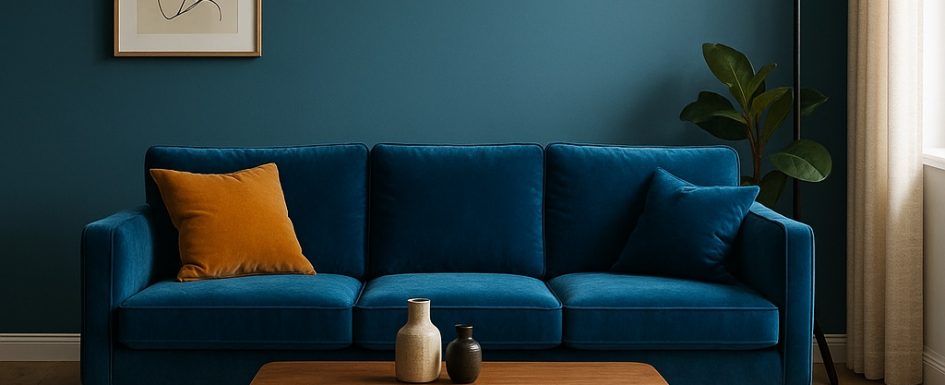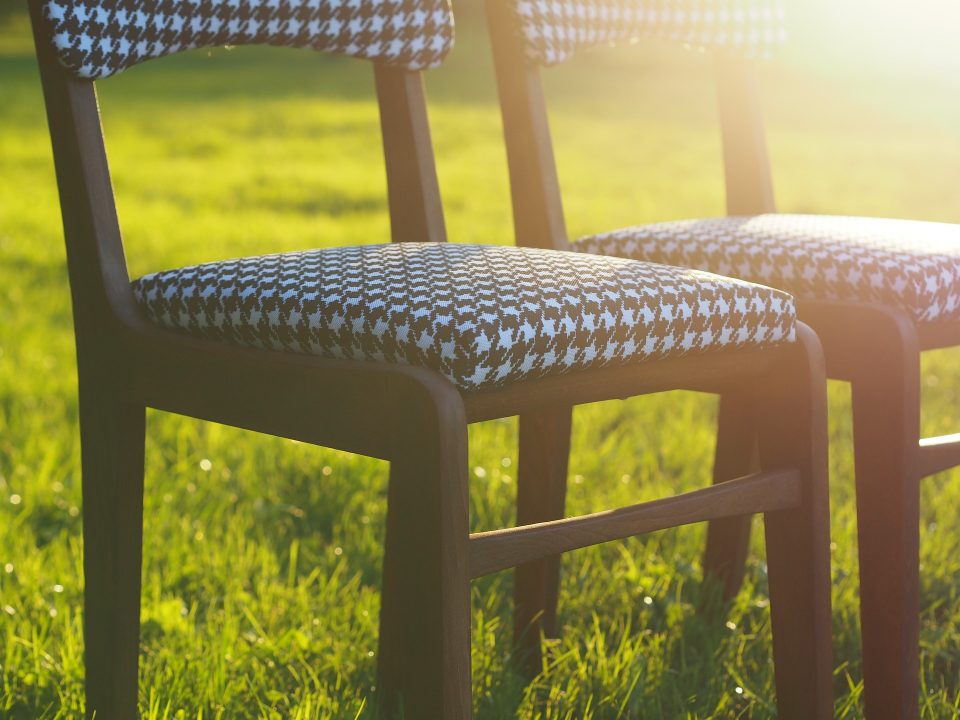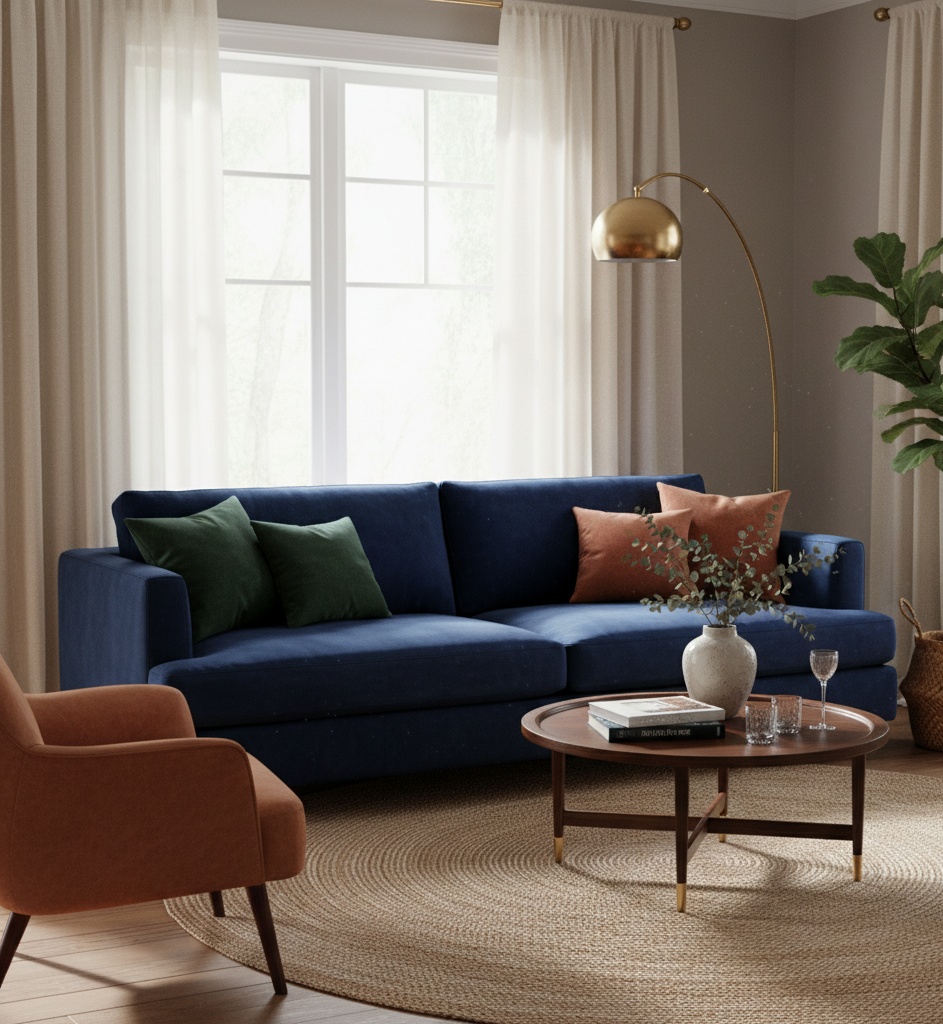
 Like classic houndstooth, velvet is a characterful fabric that’s firmly back in style. Its presence proves it remains timeless in our interiors.
Like classic houndstooth, velvet is a characterful fabric that’s firmly back in style. Its presence proves it remains timeless in our interiors.
Many will remember Bree Van de Kamp’s iconic blue sofa in Desperate Housewives—a symbol of poised, classic elegance.
Used thoughtfully, velvet takes a space to the peak of chic. It can become the statement piece of your living room, amplified by a colour-painted wall, a retro side table, or a vintage floor lamp. A refined rug completes the scene with subtle softness.
Don’t be afraid of velvet—it’s sophisticated, tactile and beautifully nuanced.
Why velvet still leads the way in interior design
A fabric bridging retro and contemporary
Long associated with luxury and traditional rooms, velvet now thrives in modern spaces. Its warm texture softens minimalist schemes and adds visual depth. In vintage-inspired settings, it reinforces charm and authenticity without feeling dated.
📐 Interior designer’s tip: velvet instantly reshapes a room’s mood. It creates a cocooning, calming atmosphere, softens light and brings a refined sense of intimacy that reads as timeless.
Velvet as a symbol of comfort and elegance
Its silky hand and controlled sheen add sophistication. Velvet invites rest and composure—perfect for sofas, headboards and cushions. Even small touches can turn any room into a more welcoming retreat.
Ways to layer velvet into your décor
The velvet sofa or armchair: the living room hero
A navy, emerald or terracotta velvet sofa sets the tone with character and poise. Positioned centrally, it anchors the living area and pairs naturally with curtains, lighting and accent furniture.

Cushions, curtains and headboards: small choices, big impact
Velvet also shines in accents: mixed cushions, a throw, heavier curtains or a tufted headboard add warmth without visual overload. These details are often what give a home its soul.
📐 Pro tip: if maintenance worries you, keep velvet to accessories rather than high-wear seating. You’ll preserve its texture and colour for longer—especially handy with pets at home.

On walls or in details: bold yet balanced
Velvet on wall panels, doors or a reupholstered vintage chair adds depth and stage-worthy character. Paired with natural materials, it feels elevated yet restrained.
📐 Architect’s tip: velvet pairs beautifully with matte finishes—light woods, natural stone, travertine or micro-cement. Mixing textures builds depth, balance and personality.

Which velvet to choose
Cotton, synthetic or silk velvet: differences and best uses
Cotton velvet is the go-to: soft, durable and easier to clean. Silk velvet offers unique depth and natural lustre but needs extra care. Modern synthetics (polyester, microfibre) are robust and ideal for everyday living.

Corduroy vs. plain velvet: two distinct looks
Plain velvet reads sleek and refined, reflecting light evenly. Corduroy adds rhythm, texture and a subtle retro note. Blending both can create a nuanced, harmonious dialogue in the same room.
📐 Interior designer’s tip: to avoid a “heavy” look, introduce velvet with restraint. One statement piece or a handful of cushions is enough to deliver warmth and elegance while keeping proportions balanced.
Velvet isn’t just a trend—it’s a material with soul. It warms, softens and elevates, crossing seasons without losing its charm. One well-chosen piece can transform the entire atmosphere.
FAQ – Velvet in interior design
Why is velvet back in modern interiors?
It blends softness with character. Velvet warms minimal schemes and brings timeless elegance to contemporary décor.
What ambience does velvet create in a room?
A cocooning, intimate feel. Its tactile texture and soft sheen add serenity and visual comfort.
Which materials pair best with velvet?
Light woods, natural stone, travertine and micro-cement highlight velvet’s depth and balance its glow.
How can I recognise quality velvet?
Look for dense weaving, even pile and a rich, uniform sheen. Good velvet keeps its hand over time.
How to decorate with velvet without overdoing it?
Keep proportions in check: a sofa, curtains or cushions are enough. Clean lines and matte textures keep it refined.
Why do interior designers love velvet?
It delivers comfort, light control and depth. Velvet structures space and adds an emotional layer to the design.
